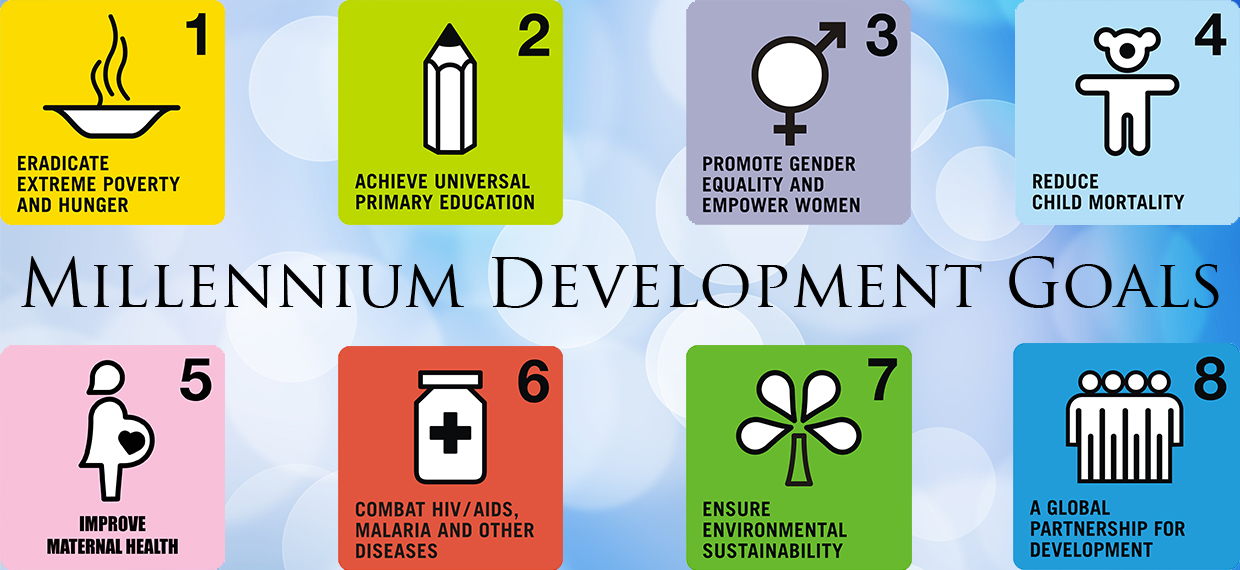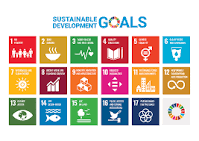MILLENNIUM DEVELOPMENT GOALS (MDGs): CHALLENGES AND LESSONS
The
Millennium Development Goals (MDGs) were a set of eight international
development goals established following the Millennium Summit of the United
Nations in 2000. The goals aimed to address various global challenges,
including poverty, hunger, gender equality, education, and health. While
progress was made in several areas, the MDGs were not universally achieved, and
their success varied across regions and goals. Here are some reasons why the
MDGs faced challenges and, in some cases, fell short:
LIMITED
SCOPE AND AMBITION
The
MDGs focused on a specific set of goals, and their scope was somewhat limited. The
MDGs were criticized for not encompassing a broad enough range of issues. Some
critics argue that the goals did not address all critical aspects of
development, such as environmental sustainability, governance, and inequality.
UNEVEN
PROGRESS
Progress
towards achieving the MDGs was uneven across regions and countries. While some
nations made significant strides, others lagged behind, and certain regions
faced persistent challenges due to factors like conflict, political
instability, and weak institutions.
LACK
OF MONITORING AND ACCOUNTABILITY
Monitoring
and accountability mechanisms for tracking progress were not robust enough. In
many cases, there were limited consequences for countries that did not make
sufficient efforts to achieve the goals.
INSUFFICIENT
FUNDING
Adequate
funding is crucial for implementing development initiatives. Some countries,
particularly those with economic challenges, struggled to allocate sufficient
resources to meet the MDGs. Additionally, global economic fluctuations and
competing priorities in donor countries affected the consistency and volume of
international aid.
COMPLEX
INTERCONNECTED CHALLNGES
Many
of the MDGs were interconnected, and progress in one area often depended on
addressing issues in another. For example, improvements in education and health
are closely linked to poverty reduction. Failure to address these
interconnections holistically hindered progress.
WEAK
GOVERNANCE AND INSTITUTIONS
Weak
governance, corruption, and inadequate institutions in some countries hindered
effective implementation of policies and programs aimed at achieving the MDGs.
UNFORESEEN
CHALLNGES
The
MDGs did not anticipate certain emerging challenges, such as the global
economic crisis of 2008, new epidemics (like the Ebola outbreak), and the
complexities of addressing issues like climate change.
CHANGING
GLOBAL DYNAMICS
The
geopolitical landscape shifted, and new global challenges arose during the
MDGs' timeframe. Issues such as increased conflicts, forced migration, and
terrorism diverted attention and resources away from the original goals.
In
response to the limitations and lessons learned from the MDGs, the
international community adopted the Sustainable Development Goals (SDGs) in
2015, building on the successes and addressing the shortcomings of the MDGs.
The SDGs take a more comprehensive and interconnected approach to development,
recognizing the complexity of global challenges.
SOCIAL
AND CULTURAL FACTORS
Some
MDGs were challenging to achieve due to deeply rooted social and cultural
factors. For example, achieving gender equality and reducing maternal mortality
required addressing entrenched cultural norms and practices.
In
response to the lessons learned from the MDGs, the international community
adopted the Sustainable Development Goals (SDGs) in 2015. The SDGs take a more
comprehensive and interconnected approach, addressing a broader range of issues
and recognizing the complexity of global challenges. The SDGs also emphasize
inclusivity, leaving no one behind, and integrating economic, social, and
environmental dimensions of development.
In context
of Nepal, it faced a mix of successes and challenges in pursuing the Millennium
Development Goals (MDGs). Here's an overview of how the country performed in
various areas:
POVERTY REDUCTION
Nepal
made significant progress in reducing poverty during the MDG period. The
proportion of people living in extreme poverty declined, and the country
achieved the MDG target of halving the poverty rate by 2015.
EDUCATION
Nepal
made strides in improving primary education, with increased enrollment and
improved gender parity. Efforts were made to expand access to education in
rural areas. However, challenges remained in terms of the quality of education,
and dropout rates remained a concern.
GENDER
EQUALITY
Nepal
made progress in promoting gender equality, particularly in education and
health. Efforts were made to address gender disparities, but challenges
persisted in terms of women's participation in decision-making and issues
related to gender-based violence.
HEALTH
Nepal
achieved notable progress in maternal and child health. The country made
efforts to increase access to healthcare services, leading to a reduction in
maternal and child mortality rates. However, challenges such as remote
geography and limited healthcare infrastructure in certain areas remained.
ENVIRONMENTAL
SUSTAINABILITY
Nepal
faced challenges related to environmental sustainability, particularly in the
context of rapid urbanization and deforestation. Balancing economic development
with environmental conservation posed difficulties.
GLOBAL
PARTNERSHIPS
Nepal
relied on international aid and partnerships to support its development
initiatives. However, challenges in aid coordination and fluctuations in
external assistance affected the country's ability to meet some MDG targets.
WATER
AND SANITATION
Progress
was made in improving access to clean water and sanitation facilities in both
urban and rural areas. However, challenges persisted in ensuring universal
access, particularly in remote and mountainous regions.
It's
important to note that while Nepal made progress in several areas, the country
faced significant challenges, including political instability, natural
disasters (such as the earthquake in 2015), and the complexities of
transitioning from a monarchy to a federal democratic republic. These factors
influenced the pace and success of MDG implementation.
Looking
forward, Nepal, like many other countries, transitioned to the Sustainable
Development Goals (SDGs) in 2015. The SDGs build upon the MDGs and provide a
more comprehensive and integrated framework for addressing global challenges,
including poverty, health, education, gender equality, and environmental
sustainability. The success of the SDGs in Nepal will depend on continued
efforts in governance, infrastructure development, social inclusion, and
sustainable economic growth.



Comments
Post a Comment